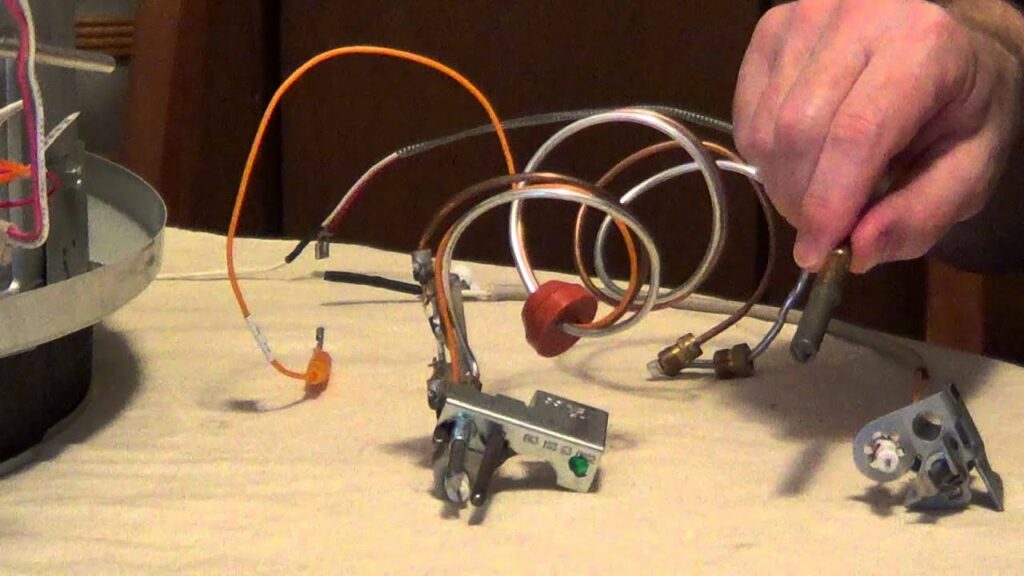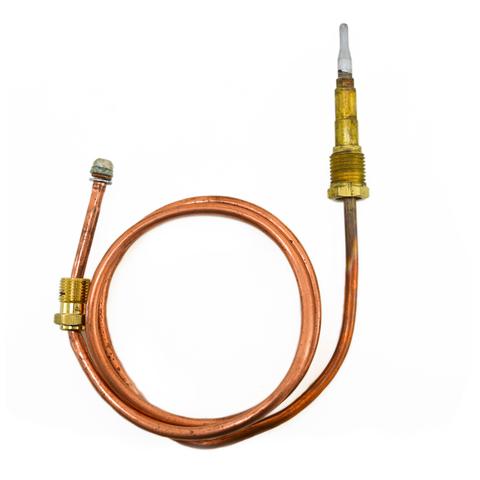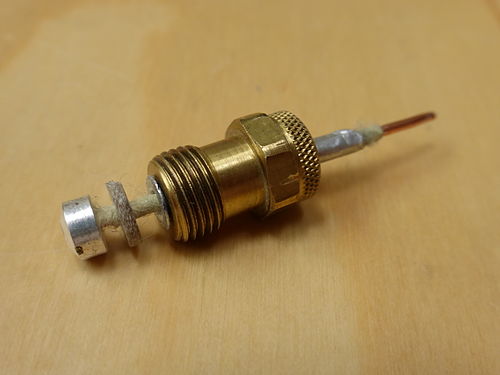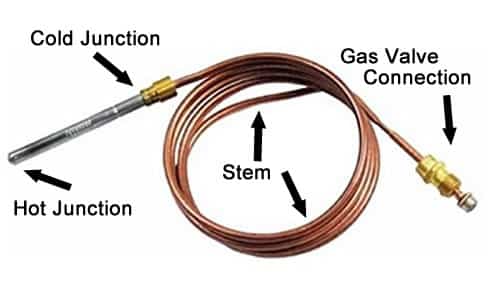The difference between thermopile and thermocouple matters. Thermocouples and thermopiles produce power by sensing temperature using thermoelectric principles. The devices can be found in a variety of applications including gas fireplaces and fireplace inserts. Understanding the difference between thermopiles and thermocouples necessitates an understanding of these two devices. So, follow this blog post in Linquip to learn the definition of each device as well as the difference between them.
The Definition of the Thermopile
A thermopile is sometimes referred to as a “Power pile”. It is just a sequence of thermocouples that can create more millivolts than a single thermocouple. It is a highly sensitive tool used to detect minute variations in degrees of heat. Thermopile is made up of antimony and bismuth bars, or any two metals with differing heat conduction capabilities, connected with an astatic galvanometer, which is extremely sensitively affected by the electric current produced in the system of bars when subjected to even the mildest degrees of heat.
The Definition of the Thermocouple
A thermocouple is one of the most essential temperature measuring devices. It is a sort of flame safety device that prohibits the gas valve from distributing gas into the burners when there is no flame present. Such device is mainly found in older conventional pilot appliances, such as furnaces, water heaters, and unit heaters. A common thermocouple will generate up to 30 millivolts.
The thermocouple is made up of two dissimilar electrical wires that come together to produce an electrical junction. They produce two electrical connections when combined: the measurement or hot junction and the reference or cold junction. When such junctions express differing temperatures, a milliampere DC voltage or a thermo-electric voltage is produced. In the temperature reading equipment, the thermoelectric voltage is subsequently converted into a temperature.
The thermocouple is commonly employed as an instrument-connected temperature sensor. When used for temperature control and correction, a thermocouple has poorer accuracy and necessitates a millivolt-to-temperature conversion. Because of its endurance and lower production costs, the thermocouple is increasingly employed in industrial applications.
To measure the output voltage of the thermocouple, a piece of measuring equipment such as a voltmeter is all that is required. The thermocouple is widely utilized in major businesses. The thermocouple is capable of operating at considerably greater temperatures.
Let’s read these two important questions about the thermocouple:
Can the thermocouple go bad? How?
The presence of oxygen in the thermocouple generates a reaction that can wear out the component and cause the wires to become thinner and more brittle. Oxidation can occur when a little quantity of oxygen enters a sealed environment and reacts with the pure metal of the thermocouple.
What happens if a thermocouple fails or stops?
Normally, when the thermocouple fails to operate, it simply turns off the gas to the heater. This is critical especially if the pilot light is out since it keeps dangerous gas from escaping into the home.
What is the difference between thermopile and thermocouple?
The difference between thermopiles and thermocouples is their measuring method. The thermocouple is a thermoelectric instrument. It is a transducer consisting of two different metals welded together at each end; a voltage is produced that is proportional to the difference in temperature between the two junctions, one of which is normally held at a known temperature, whereas thermopile is an electronic device that converts thermal energy into electrical energy.
When compared to a thermocouple, a thermopile generates a higher voltage output. It is equipped with a series of thermocouples that are organized to measure tiny amounts of radiant heat.
Furthermore, the thermopile is a non-contact temperature sensor device that measures temperature using infrared radiation and the “IR Absorber” system. A thermocouple, on the other hand, is a contact-based temperature sensor. It is made up of antimony and bismuth bars alternated, or any two metals with differing heat conduction capabilities. It is linked to an astatic galvanometer which is highly sensitive to the electrical current produced in the bar system when subjected to heat.
Another difference between a thermopile and a thermocouple is that a thermocouple is a metal junction that, when heated by a pilot flame, creates about 25 mv and holds open an electromagnetic valve, allowing gas to pass as long as there is a pilot. A thermopile in a heating system is an assemblage of several thermocouples that generate roughly 750 mv and activate the main gas valve on a heat call if the pilot is lighted.
As mentioned earlier, a thermocouple is a temperature measurement gadget made up of two wires of different metals connected. The potential difference between the wires is a measure of the temperature of whatever they contact, whereas the thermopile is a collection of thermocouples used to measure radiant energy or to convert radiant energy into electric current!
While thermopiles and thermocouples provide precise temperature readings, the thermopile produces more power in the process, making it more beneficial in appliances that utilize it to create electricity rather than measure temperature. Furthermore, while both devices detect radiation, the thermopile does so considerably more precisely and with a higher degree of sensitivity.
In fireplaces, thermocouples and thermopiles are generally used to produce power in gas fireplaces and fireplace inserts. However, the difference between thermopile and thermocouple here is that when a gas stove is switched on, the pilot creates heat, which passes through a thermocouple. When the heat reaches the thermocouple’s second junction, it creates an electrical voltage. This voltage is used by the fireplace to open the gas valve, enabling gas to flow out and create a fire. Because a thermopile generates more electricity than a thermocouple, thermopile-equipped fireplaces may be linked to thermostats for temperature control. The electrical current in thermocouple fireplaces is insufficient for this.
So,
Can we replace a thermopile with a thermocouple?
The point is that a thermopile produces more electricity than a thermocouple and typically uses a different sort of electrical connection. If you use a replacement that does not meet the same requirements as the original, your gas control may not work correctly.
Summary
This article compared thermopiles and thermocouples and discussed the difference between the two. The thermocouple and thermopile are distinguished by the fact that the thermocouple is a thermoelectric device and the thermopile is a device that converts electrical energy into thermal energy. It was also discussed that a thermocouple is composed of two dissimilar conductors that create electrical connections at various temperatures. It generates a temperature-dependent voltage. It is used to measure temperature, while a thermostat is used to control it. Please feel free to contact us if you’d like to ask any more queries about the topic. Register in Linquip and get your answers on the difference between thermopile and thermocouple.
Buy Equipment or Ask for a Service
By using Linquip RFQ Service, you can expect to receive quotations from various suppliers across multiple industries and regions.
Click Here to Request a Quotation From Suppliers and Service Providers
Read More On Linquip
- 3 Different Types of Hygrometers and Their Applications
- Your Convenient Preventive Maintenance Checklist
- Working Principle of Thermocouple + Diagram
- What is the Core Difference between Thermistor and RTD?
- Difference Between Actuator and Sensor: The Ultimate Guide
- Difference Between Fuse and MCB: A Comprehensive Guide
- The Best USA Thermocouple Manufacturers
- Thermocouple vs. Thermopile: A Complete Comparison & Advantages of Each Type






